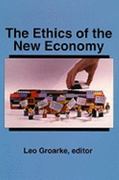1. Suppose that many US universities rely on international graduate students as a primary revenue source. Suppose further that something happens which causes the number of student visas issued by the US government to fall dramatically. How does this change supply and demand for graduate education in the short-run? What long-run changes would occur if the number of visas granted remained low? Draw pictures of the short-run and long-run changes to supply and demand 2. Some economists have speculated that as baby-boomers (the large number of people born in the US from 1945 to 1962) begin to retire and live off their in the next few years the prices of US stocks will fall. Use the theory of demand we discussed in class to explain this speculation. 3. Our School has always priced MS FE tuition and MS tuition in the physical engineering disciplines at the same levels. Suppose that we chose to try to increase revenue by setting different tuition levels for different majors - how would we use the concept of "elasticity" to help us do this? 4. We learned that a firm should hire employees as long as the rule that marginal revenue product exceeds marginal cost holds. Many firms management training programs where new hires are paid well for a year or two but do not produce much value during that time. Are such firms behaving in violation of the rule? Explain your answer. 5. Give an example of an economy of scale and an example of an economy of scope not found in your textbook. 6. Klein Corporation's marketing department estimated demand for their product at: Q =-104 -2.1P +3.21 +1.5A +1.6Z Where: Q = demand (in units) P = price (in Euros per unit) I = income (per capita, in Euros) A = advertising expenditures (in thousands of Euros) Z = competitor's price (in Euros per unit) a. If I = 5000, A = 20, and Z = 1000, what is Klein Corporation's demand curve? b. If, additionally, P = 500, how much of Klein Corporation's product is demanded? 7. The Helfand Company estimates that the demand function for their product is: Q = 500-3P +2L +0.011 Where: Q = demand (in units) P = Helfand's price L = Lieb's price (Lieb is a rival company) I = income Currently, P = 10, L = 20, I = 6000 a. What is the price elasticity of demand for Helfand's product? b. What is the cross-price elasticity with Lieb's product







